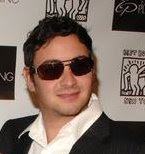Range:
When I was younger, I was blessed with a natural high register. Being exposed to Maynard Ferguson when my Mom was 8 months pregnant, may have had something to do with it! (Two years later, I had run head first into a stereo, sealing the deal.) After wearing out the grooves in Maynard’s Chameleon and New Vintage records, I ended up with a solid G above high C on trumpet by the time I was 14. I’d play along with the records and try to imitate the brilliant and powerful sounds that only “The Boss” could achieve. In retrospect, imitating sound was the only thing on my mind. Deep breaths, blowing hard and pushing down valves (occasionally).
My Dad knew that I had something going on, based on my intense interest in the instrument and its players. He knew wailing would only get me so far in the industry so he began searching for a private instructor to guide me further down the path. We bought Wynton’s Haydn and Hummel debut record along with Carnival. At this point, I was wearing out the tape heads trying to imitate Wynton’s vocal quality and blinding speed. In a previous blog, I posted an amazing video of seven-year-old Geoffrey Gallante playing some of Herb Alpert’s music. It seems to me that Geoffrey has heard Alpert’s rendition of Spanish Flea and is playing through intuition. Check out his groove at 0:55!
Dedicating all my energy towards classical trumpet throughout high school, my range fell by the way-side. When I made a cognizant decision to build my range back up, I also unknowingly abandoned copying sound, which had proven to be a useful tool. I was doing things by the books (so to speak), and working through my range gave me the opportunity to grasp what I’d previously done naturally.
A few tips I’ve found to be helpful:
1. Use more air than you’re used to using, stay relaxed!
2. When Breathing, visualize your rib cage winging outward. Fill up from the bottom.
3. Stay low on the pitch especially as you go upwards. The tendency is to play high on the pitch (and tighten up) as you ascend, restricting the vibration of the lips.
4. Staying low on the pitch means your slide should not be pulled out too far. If the slide is to far out, you are playing against the nature and physics of the instrument.
5. Try to keep your body and mind in the same place on the second line G as you would on a D above the staff… etc. and so on.
7. Listen to people with range and try to copy the sound.
8. Start softly, and build velocity and volume over time.
9. Overtime, slots will reveal themselves and they will become part of your muscle memory.
10. Listen, Listen, Listen!!!
">
Subscribe to:
Post Comments (Atom)

No comments:
Post a Comment